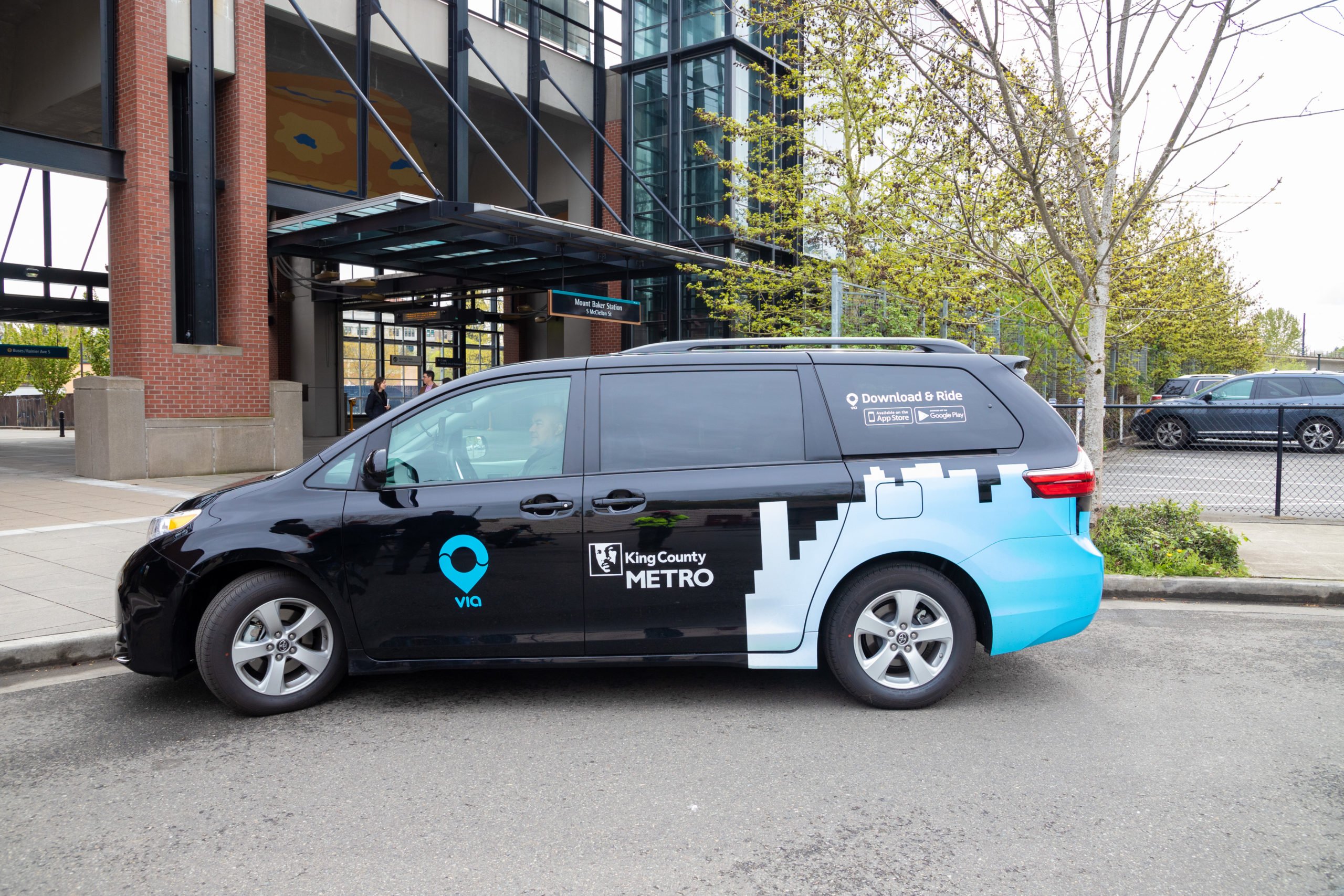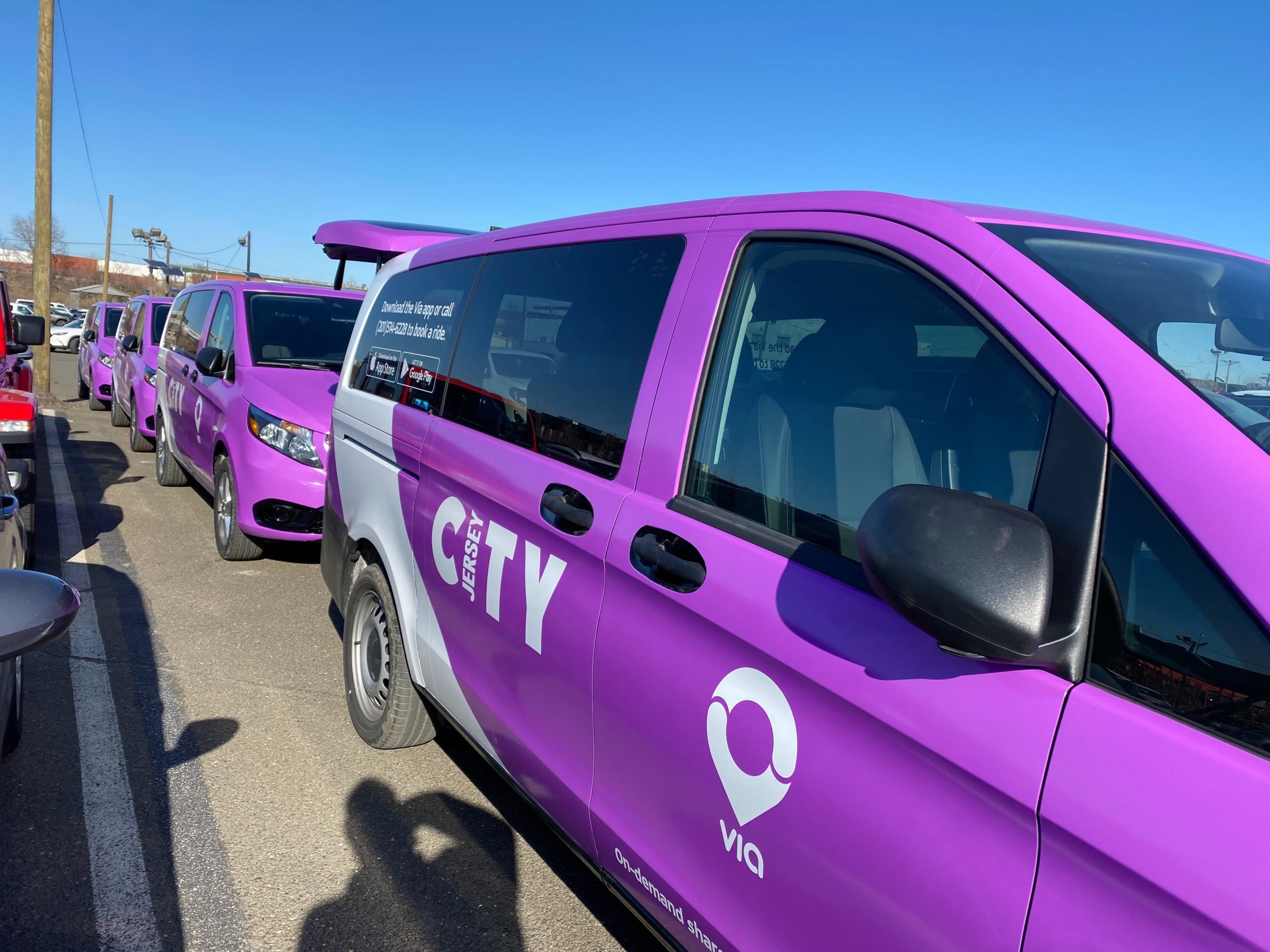For people with easy access to a car, public transit is a convenient option — when traffic is bad, or maybe parking is a hassle. But for everyone else, transit is the only option: A lifeline without which they would lose access to jobs, healthcare, groceries, recreational activities, and more.
Historically, however, public policy has forgotten about this group that is most in need of affordable and efficient transportation, resulting in serious inequities that the coronavirus pandemic has further accentuated. Beth Osborne is always looking for new ways to address transportation inequality through her work as Director of Transportation for America and, in a recent webinar held in partnership with Via, Osborne moderated a conversation with a new generation of transit leaders deploying microtransit to close opportunity gaps in communities of all sizes.
Whether by filling first-and-last mile gaps for individuals to get to and from mass transit stops or offering origin-to-destination service in areas that lack any other public transportation infrastructure, on-demand transit continues to be a critical tool in addressing the challenge of equitable access to transportation and, thus, economic mobility. “To be completely transparent, microtransit is something we thought might work, but we weren’t really sure. The benefit of this pilot with Via was that the system is so flexible: We had the ability to play around with the boundaries and adjust them after we had already launched the pilot, which really helped.”
Increasing ridership in Delaware.
Veronica Vanterpool, Chief Innovation Officer of the Delaware Transit Corporation (DTC), is focusing on rural communities in southern Delaware — like Georgetown, in Sussex County — that have not been well-served by existing transit. “We are providing fixed route service, but buses are coming hourly,” she explains. “Hourly service doesn’t work for most people, and it certainly doesn’t work for our customers in rural communities. What we found is that 20% of Georgetown residents are living in poverty. Many of them are working low-wage jobs.... We want to ensure that our customers have better options to not only access their jobs, but health services and other facilities.”
Rural Delaware also includes high concentrations of people with mobility impairments, older adults, veterans, and Latinos. Among all Sussex County transit riders, 4% do not have access to a car and 32% only have one car per household. “Many individuals may not be able to access our fixed route network,” says Vanterpool. “They might have bad knees, so they can’t walk a quarter of a mile to the stop, or the bus stop might be located along a dangerous arterial where speeds are 45 miles per hour. We want to better connect these individuals who may have never used our transit network by providing an alternative that helps bridge that gap.”
To that end, the DTC is piloting a microtransit service with Via to help people in rural communities connect with buses to travel wherever they need across the state. With the new service, called DART Connect, Vanterpool’s team expects to gain more knowledge on how TransitTech can better the entire state’s public transportation infrastructure — both directly, through new service models, and indirectly, by bringing efficiencies that allow for reinvestment into fixed routes. “That is an incredibly attractive prospect for us, especially as we look at this integrated mobility system that we’re piloting with Via as our partner. How do we make it easier for residents to traverse the entire state of Delaware on transit?”
Listening to communities in Washington.
Casey Gifford is the Innovative Mobility Senior Planner at King County Metro (KCM) in Seattle, a public transportation agency that delivered 130 million rides annually pre-Covid. In this role, she led a first-and-last mile pilot — Via to Transit — that is now one of the top-performing services of its kind, and has continued to prioritize access for those with the greatest unmet needs, including people of color, low-income riders, people with disabilities, and English language learners.
“High-capacity, fixed route transit will continue to be the backbone of regional mobility,” Gifford says. “But we can use new and innovative mobility services to complement that network and fill first-and-last mile gaps, as well as provide service in lower-density areas.” Gifford notes that sparsely-populated areas often have high percentages of low-income individuals and are often difficult to serve with traditional fixed route transit due to topography. The goal with Via to Transit has been to help traditional transit and microtransit work in tandem.
Funded through the Federal Transit Administration’s Mobility on Demand Sandbox grant, the microtransit service has proven very successful, with more than 90% of trips transferring riders to and from KCM’s fixed route system. Gifford also emphasizes the importance of listening to riders, in order to make the service even better.

“We’ve heard from the community how we can improve, and we are incorporating that into our pilot,” she says. “Some of the earliest feedback we got was that riders didn’t like to walk to their ride late at night. It didn't feel safe, both because the area often lacks sidewalks and so they’re afraid of being hit by a car, but also for their personal safety. So we eliminated the walk. There is less demand at that time, so it didn't really affect efficiency. That was great customer feedback.”
Gifford also recalls feedback from the disability community, who said it would be helpful if they could offer more detail about their needs when requesting a ride, so they were not stuck waiting for a wheelchair-accessible vehicle if they didn’t require one. “We’re now able to optimize the use of wheelchair-accessible vehicles while providing a better service for riders and drivers who have been trained to serve riders with different kinds of disabilities,” she says. “Riders can now indicate whether they have limited vision or they are deaf, and this way they get a more catered level of service.”
Serving transit deserts in New Jersey.
Barkha Patel, Director of Transportation Planning for Jersey City, New Jersey, is dealing with similar challenges to Seattle and rural Delaware, in a much different environment. Jersey City is located across the Hudson River from Manhattan. It has a population of 300,000 and some of the highest transit usage in the nation. Yet the city itself has very little control over local transit, most of which is overseen by state agencies.
“We had been constantly hearing from residents all over the city that there wasn’t adequate transit and, where there was transit service, it wasn’t efficient,” Patel says. “When we started to look at possible solutions, we didn’t know microtransit would solve these issues, we just knew there was a transit problem and we didn’t quite know how to fix it.” Patel and her team quickly realized that microtransit could complement existing systems, giving riders more flexibility to access shuttles, bus lines, and transit hubs. But, after selecting this new TransitTech-enabled service model, they had to decide where to deploy it.

“We didn't want the vans to be circulating in high-density areas, because they already had a lot of transit access. We wanted, instead, to focus on the places we defined as transit deserts, which, in Jersey City, aren’t necessarily locations where there isn't a transit stop, but more that the frequency of the transit is inadequate.”
So, the city was divided into zones to encourage people to use locally-available options and reserve the microtransit fleet for outer areas that needed them more urgently. “To be completely transparent, [microtransit] is something we thought might work, but we weren’t really sure. The benefit of this pilot with Via was that the system is so flexible: We had the ability to play around with the boundaries and adjust them after we had already launched the pilot, which really helped.”
The service now averages between 7,000 and 8,000 rides per week, well beyond the goal of 1,000 rides per week. Even more importantly, the majority of trips are originating in transit deserts. “A majority of the people using the service are low-income and people of color,” Patel says. “It really is focusing on the people we wanted to prioritize. We’ve just begun year two and have expanded the service because of its success.”




